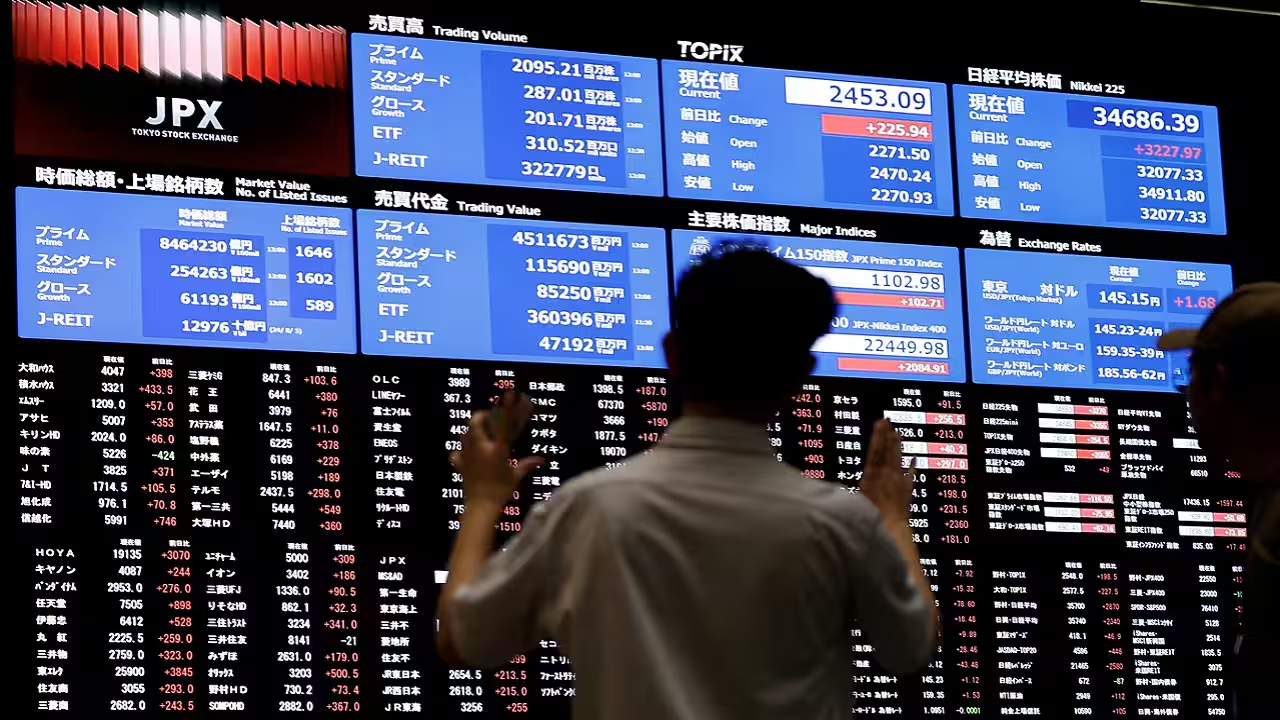
The stock market experienced a notable downturn today, reflecting investor nervousness amidst mounting concerns over corporate earnings and escalating trade tensions. The Dow Jones Industrial Average, S&P 500, and Nasdaq Composite all registered declines, signaling a cautious approach from market participants. As Wall Street continues to grapple with these complex issues, traders are closely monitoring corporate earnings reports and geopolitical developments that could influence market trajectories in the coming weeks.
Market Overview: The Latest Movements and Key Figures
The Dow Jones Industrial Average closed substantially lower, shedding over 350 points, primarily impacted by declines in industrials and financial stocks. The S&P 500 also experienced a significant dip, with technology and consumer discretionary sectors leading the slide. The Nasdaq Composite, known for its tech-heavy composition, declined by over 200 points, reflecting investor caution in the tech sector amid trade uncertainties.
These movements highlight the underlying nervousness permeating the markets, as investors weigh the potential impacts of upcoming earnings seasons against ongoing geopolitical and trade-related concerns. The volatility underscores a period of heightened uncertainty, where macroeconomic indicators and corporate performances are heavily scrutinized.
Impact of Corporate Earnings on Market Sentiment
Earnings season is in full swing, and investor sentiment is increasingly driven by the results and outlooks provided by major corporations. Several large firms have reported earnings that missed expectations, contributing to the downward trajectory of the indices. Disappointing results in sectors such as technology, manufacturing, and retail have further fueled concerns about economic growth amid rising input costs and supply chain disruptions.
*Highlights of today’s earnings reports include:*
- Major tech giants posting mixed results, with some beating estimates but others warning of challenges ahead.
- Manufacturers citing increased tariffs and input costs impacting margins.
- Retailers experiencing softer consumer spending data, raising questions about consumer confidence.
Investors are digesting these earnings figures carefully, aiming to assess whether the reported results indicate a broader economic slowdown or are isolated incidents. The predominant sentiment points towards caution, with many market participants adopting a wait-and-see approach.
Trade Tensions and Their Influence on Markets
Simultaneously, escalating trade tensions continue to cast a shadow over market stability. Recent remarks from government officials have pointed to renewed tariffs and trade negotiations with major economic partners, including China and the European Union. These developments have stoked fears of disrupted supply chains, increased costs for businesses, and potential retaliatory measures that could hamper global economic growth.
The impact on the markets has been palpable, with investors reallocating assets into safer havens like gold and government bonds. The uncertainty has also led to increased volatility, with swings in equity prices driven by news updates and geopolitical statements.
Market Analysis: What Investors Are Watching
Investors are now keenly focused on several key factors that could determine the trajectory of stock markets in the near future:
- Earnings Outlook: The upcoming quarterly reports from major corporations will be critical in assessing economic resilience.
- Trade Agreements: Progress or setbacks in trade negotiations could significantly influence market movements.
- Inflation Data: Rising inflation remains a concern, affecting interest rate policies and corporate profit margins.
- Federal Reserve Decisions: The central bank’s stance on interest rates amid economic uncertainty is closely watched.
Market strategists suggest that patience and vigilance are essential in this environment. Diversifying portfolios and maintaining a conservative stance might be prudent until clarity emerges from these ongoing developments.
The Broader Economic Context
The current downturn is not isolated but part of a broader pattern of market fluctuations influenced by macroeconomic factors. Global economic growth appears to be moderating, with some regions experiencing slower-than-expected expansion. Supply chain disruptions remain persistent, driven by COVID-19 variants and logistical challenges.
Moreover, inflationary pressures continue to influence market dynamics. Elevated prices for energy, food, and raw materials erode consumer purchasing power, potentially dampening corporate earnings and consumer sentiment further.
Looking Ahead: Cautious Optimism or Chief Concerns?
While the decline today might signal short-term turbulence, it also presents opportunities for long-term investors. Value stocks may become attractive as prices dip, and sectors resilient to trade tensions, such as healthcare and utilities, could offer safer avenues.
However, sustained declines would necessitate a reassessment of risk exposure and strategic positioning. Investors should keep abreast of earnings reports, policy statements, and geopolitical developments to navigate this uncertain terrain effectively.
Conclusion
Today’s decline in the Dow, S&P 500, and Nasdaq underscores the delicate balance that investors are trying to maintain amid a challenging mix of earnings uncertainties and trade tensions. As the landscape evolves, staying informed, flexible, and cautious will be essential for navigating the volatile waters of the current market environment.
For more updated news please keep visiting Prime News World.








